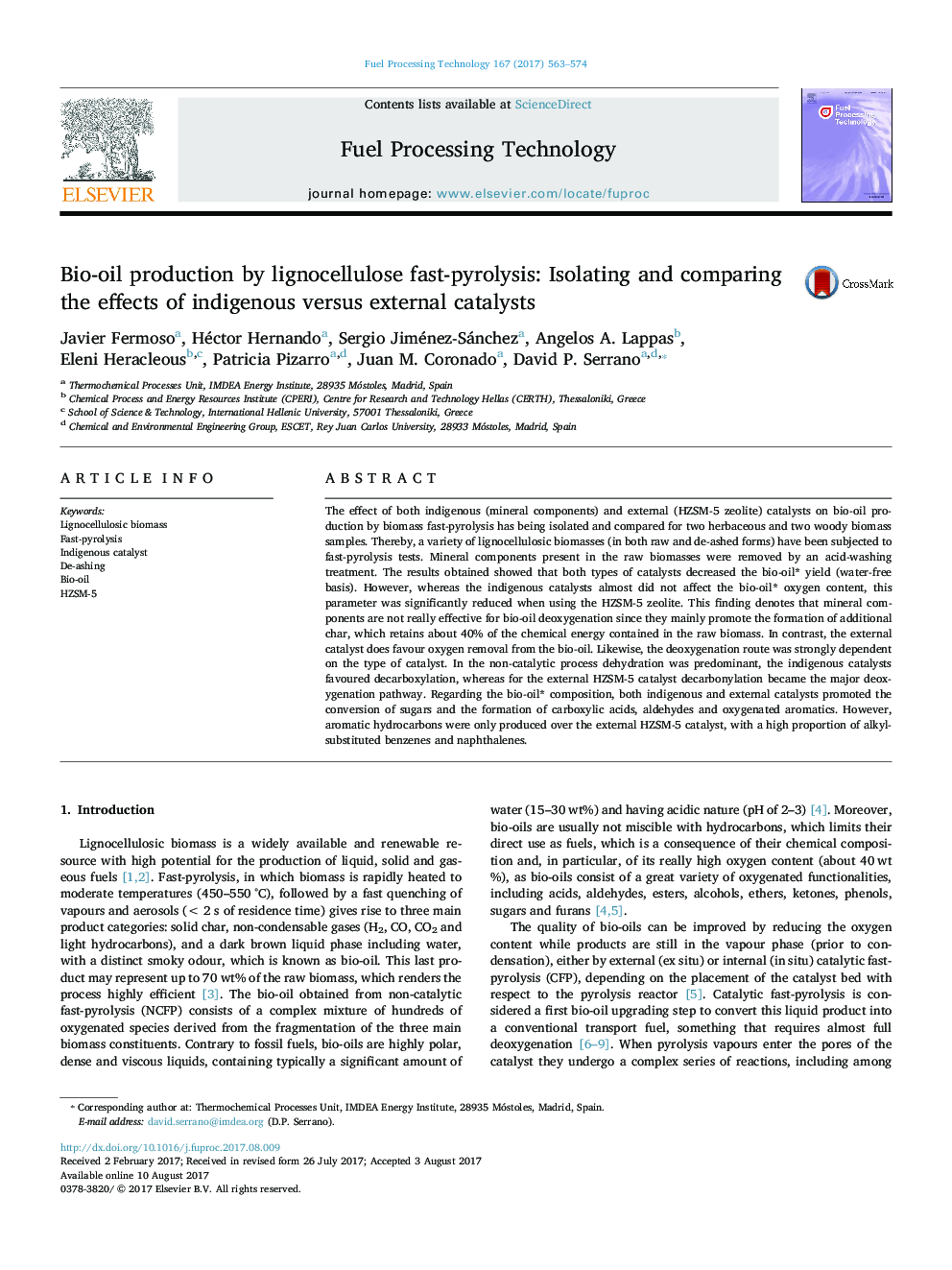| کد مقاله | کد نشریه | سال انتشار | مقاله انگلیسی | نسخه تمام متن |
|---|---|---|---|---|
| 6476353 | 1425379 | 2017 | 12 صفحه PDF | دانلود رایگان |
- Both, indigenous and external (HZSM-5) catalysts decreased the bio-oil* yield.
- Indigenous catalysts (mineral content) favoured decarboxylation pathway.
- HZSM-5 promoted decarbonylation deoxygenation route.
- Aromatic hydrocarbons were only produced over the external HZSM-5 catalyst.
The effect of both indigenous (mineral components) and external (HZSM-5 zeolite) catalysts on bio-oil production by biomass fast-pyrolysis has being isolated and compared for two herbaceous and two woody biomass samples. Thereby, a variety of lignocellulosic biomasses (in both raw and de-ashed forms) have been subjected to fast-pyrolysis tests. Mineral components present in the raw biomasses were removed by an acid-washing treatment. The results obtained showed that both types of catalysts decreased the bio-oil* yield (water-free basis). However, whereas the indigenous catalysts almost did not affect the bio-oil* oxygen content, this parameter was significantly reduced when using the HZSM-5 zeolite. This finding denotes that mineral components are not really effective for bio-oil deoxygenation since they mainly promote the formation of additional char, which retains about 40% of the chemical energy contained in the raw biomass. In contrast, the external catalyst does favour oxygen removal from the bio-oil. Likewise, the deoxygenation route was strongly dependent on the type of catalyst. In the non-catalytic process dehydration was predominant, the indigenous catalysts favoured decarboxylation, whereas for the external HZSM-5 catalyst decarbonylation became the major deoxygenation pathway. Regarding the bio-oil* composition, both indigenous and external catalysts promoted the conversion of sugars and the formation of carboxylic acids, aldehydes and oxygenated aromatics. However, aromatic hydrocarbons were only produced over the external HZSM-5 catalyst, with a high proportion of alkyl-substituted benzenes and naphthalenes.
157
Journal: Fuel Processing Technology - Volume 167, 1 December 2017, Pages 563-574
